A composite of the then and now for the historic town of Walhalla
The changing role of small country towns is something that has intrigued me for many years. As a photographer, exploring how they may succeed or fail has been both educational and an artistic challenge. I was first attracted to the tiny historic gold rush town of Walhalla for a personal art project with NPPE because of the incredible restoration work which brought this “Ghost town” of fewer than 50 residents back from a near-death experience.
There was a sense of reverence in the meticulously and proudly restored buildings repainted in colours of heritage greens, deep creams, rich red, and maroon. But it wasn’t always so. Walhalla grew out of the forest after gold was discovered in 1862 but after the mines closed in the early 1900s the town started to fade back into the trees.
After spending several days wandering the streets, shooting images and learning some of the local history I developed the feeling that this town had found its niche. Different from the majority of minimalist fine art image on this website, these images are my tribute to those who lived, worked, and died to raise Walhalla from the dense forest and to have it survive for all who visit to enjoy today. They are available to purchase as a download if you wish to print them yourself.
Walhalla - The Rich Town Spirit Lives on
Local rumour goes – apparently untrue – that the cemetery in Walhalla is so steep that people are buried standing up. With the narrow valley floor given to activities around gold mining and daily life, the steep slope near the end of town was the best practical option available. The old image superimposed on the tombstone was taken in 1970. It shows the funeral of Dominic Guatta, the last recognised goldminer to be buried in Walhalla. His grave was marked by a cross; one of more than 1300 burials within the cemetery, many of which can no longer be found. The earliest recorded burial occurred in 1866, just four years after the discovery of gold in the creek which passes 25 metres below along the valley floor.
Isolated in the mountains and with a township all too familiar with toil and struggle, Walhalla needed a venue for folk to relax and unwind. Thus, the town’s rotunda was built in 1896 and became a centrepoint of entertainment. People would come to hear the Mountaineer Brass Band, which was a regular feature act on a Saturday night when all the shops were open. The frequency and energy of entertainment centred around Walhalla’s rotunda may have waned, but the rotunda remains as a focus of attention for the tourist.
Volunteers from around Walhalla came together to form a fire brigade in 1871 and established the original fire station in the Long Tunnel Mine yard. The brigade was registered in 1889 following the devastating fire which destroyed some thirty buildings in the heart of town the year before. About a decade later it was decided to provide the brigade with a new fire station centrally located in town. As there was a shortage of suitable land the current site straddling Stringer's Creek was chosen. The included historical image shows the Walhalla Volunteer Fire Brigade at that location shortly after the station became operational. The building has undergone some modifications since and now serves as a museum dedicated to fire fighting in the town.
Sport helps bind a community, and to do so generally needs a place for spectators to gather and players compete. With flat land at a premium the Walhalla locals had to think laterally — or vertically in this case. Beginning in 1882 and with a lot of sweat and toil, people took to pick and shovel and levelled the top of a nearby peak to create what became known as "Recreation Hill". The ground was (and still is) used for a range of recreational and social activities, primarily football and cricket. There was no need for a pre-match warm-up; the steep 200 metre climb from the road took care of that! The ground was restored after a bushfire destroyed the pitch in 2019, enabling the Walhalla Cricket Club to commemorate its 150th anniversary with a game in early 2023.
As Ned Stringer found out to his joy, there was gold to be found around Walhalla in alluvial deposits along Stringers Creek. However, most of the gold was taken from mining Cohen’s Reef, the largest single reef of gold in Victoria. The richest mine was the Long Tunnel which produced more than 30 tonnes of gold until it closed in 1914. Next richest was the Long Tunnel Extended Gold Mine which yielded around 13.7 tonnes of gold from its 8.5 km long network of tunnels. This mine closed in 1911, but work commenced in the early 1970s to open a part of the mine for public tours. The early photograph shows two miners preparing a blasting hole in the gold-bearing rock of Cohen’s Reef.
The Star Hotel was one of more than a dozen hotels in town at the peak of the gold mining period and a frequent staging point for transport in and out of town. Located opposite the rotunda it was also perhaps an ideal location for a pre-entertainment drink or two. Unfortunately, the Star Hotel, which was the last of Walhalla's original hotels, was destroyed in 1951 by a fire starting in the hot water service. By that time it was a shadow of its former glory. However, in 1998 a new hotel was built, the exterior designed to recreate the facade of its predecessor. Around the same time Walhalla was finally connected to a reticulated electricity supply, and the hotel was its first customer.
Back in the heyday of gold mining one could look across the road from the Corner Stores to the above-ground operations of the Long Tunnel Mine, as shown in the historical image here. With the nearby thirty-stamp battery house crushing rock continually except for Sundays this was probably not the ideal place for a quiet conversation. But on the plus side, you could at least see at night. This road junction was one of the earliest locations in the world where there was electrified public street lighting, even if only for a short time. The lamps were installed by the Long Tunnel Mining Company apparently to dissuade local residents from stealing scarce firewood from the company stockpile. The building currently operates as a Post Office agency, shop and Tourist Information Centre.
Imagine the vast quantity of letters and parcels, telegrams, news, money orders and other items which would have moved in and out of a thriving but isolated mining town like Walhalla. More than a century ago this Post Office was the primary avenue of communication, handling around 50,000 items of mail a year. Today, as a museum, it preserves some of those same items for posterity. The heritage listed building comprising the post office and post master’s residence was built in 1886, and by surviving flood and fire it is the only original public building remaining in town.
Mechanics Institutes started to appear in Britain in the early 1800s and were important to the social dynamic and prosperity of a town. Not only did they provide adult science and technology training and up-skilling for the working class, but many had a library which helped pass the time as an alternative to alcohol and gambling. Many Institutes would also have a social programme. The Mechanics Institute in Walhalla was one of more than 1200 built in Victoria. As the town started to grow it provided a location for schooling and worship until dedicated buildings could be constructed. Like many existing town buildings it is not the original, having been rebuilt twice, most recently in 1980. Both historical images show the Institute after the initial rebuild. The image to the right also shows two mounted police with a shipment of gold outside the Bank of Victoria, which like the Institute building was reconstructed after the 1888 fire. Today, the Walhalla Mechanics Institute building provides facilities for retail and venue hire.

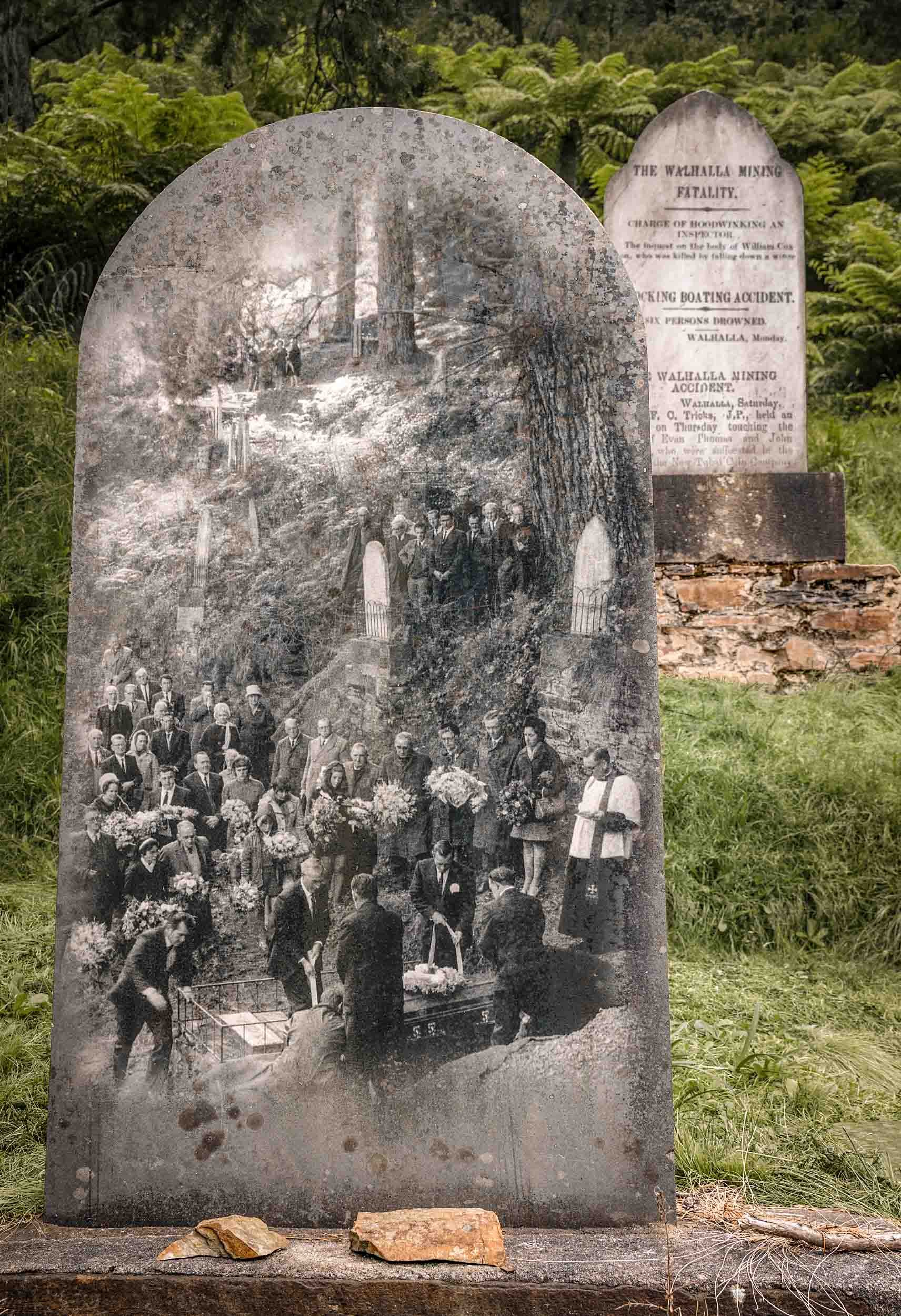
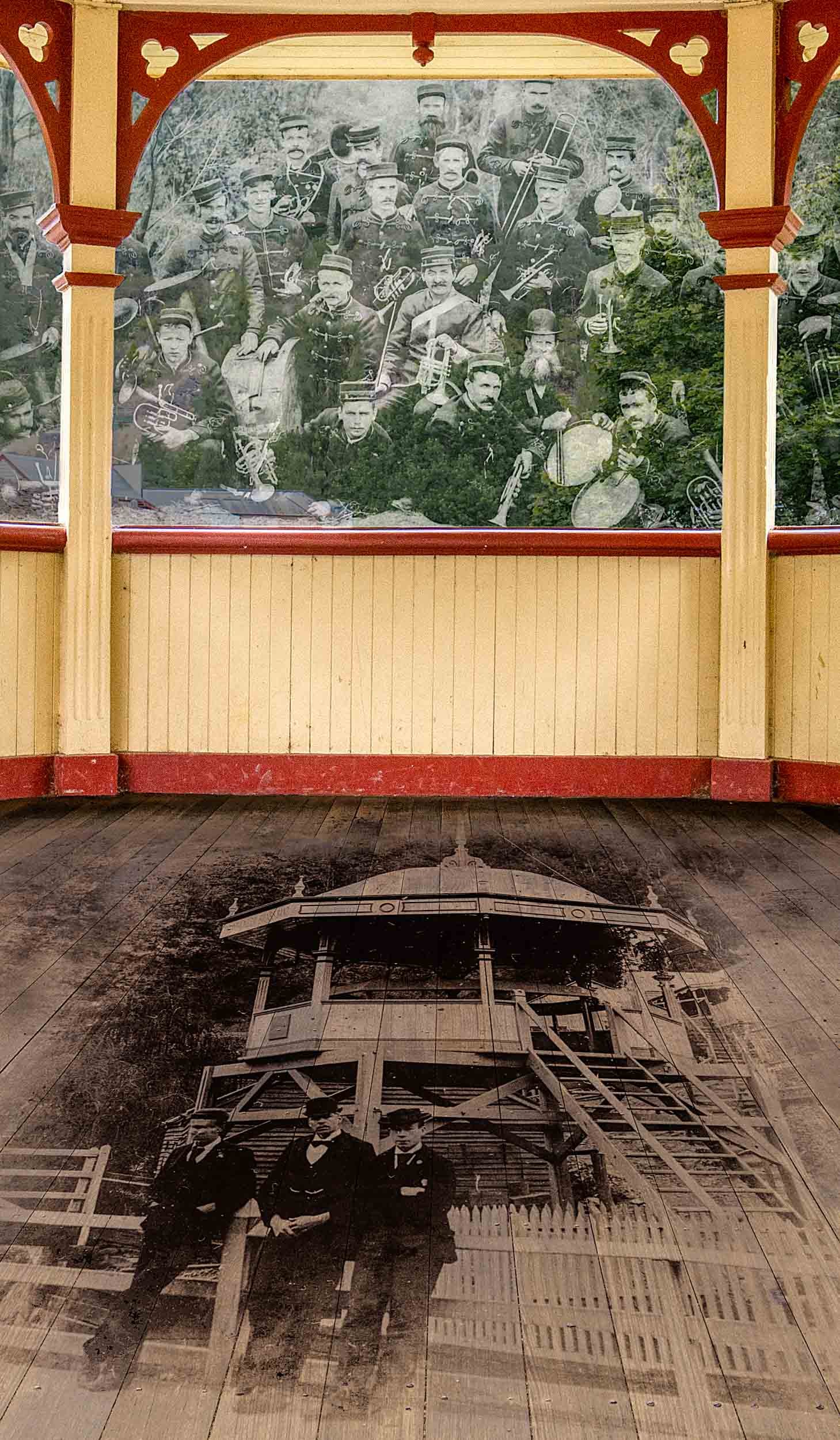

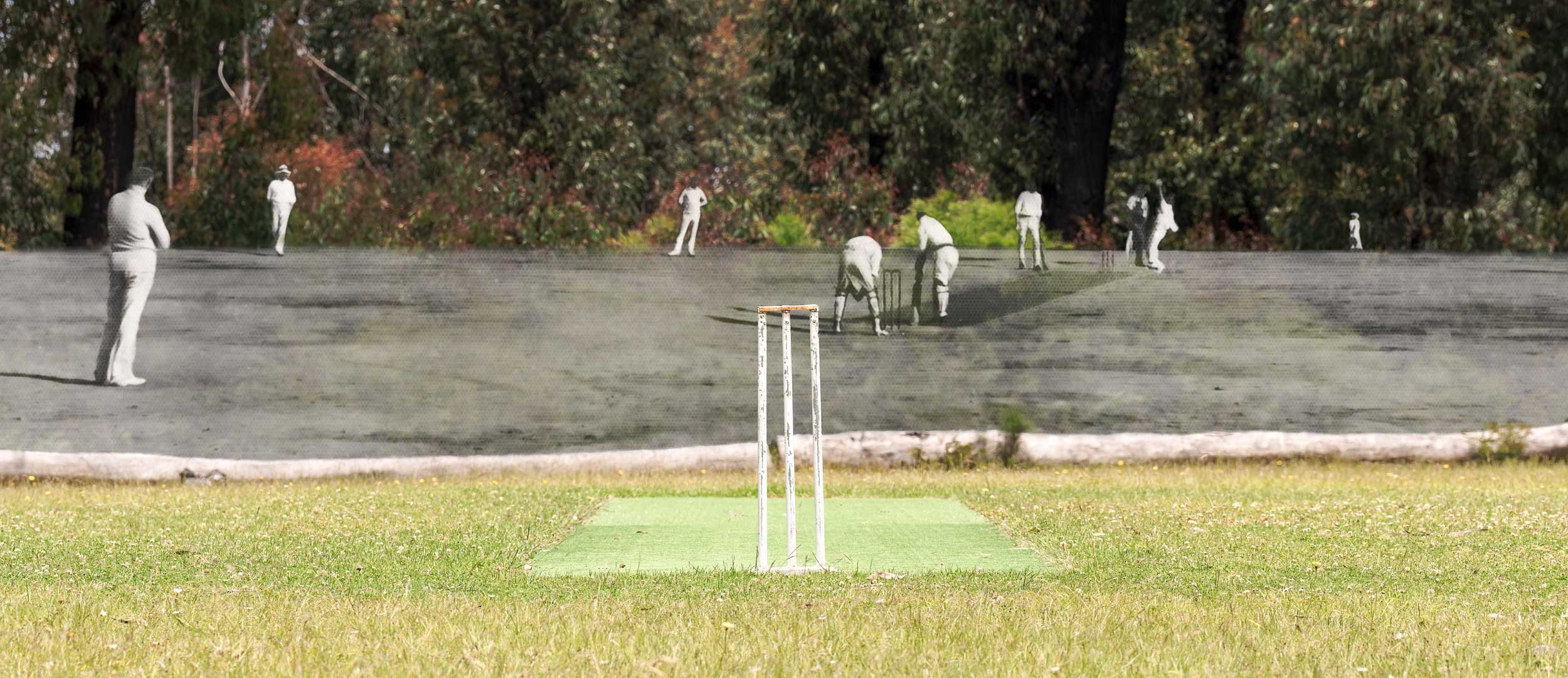



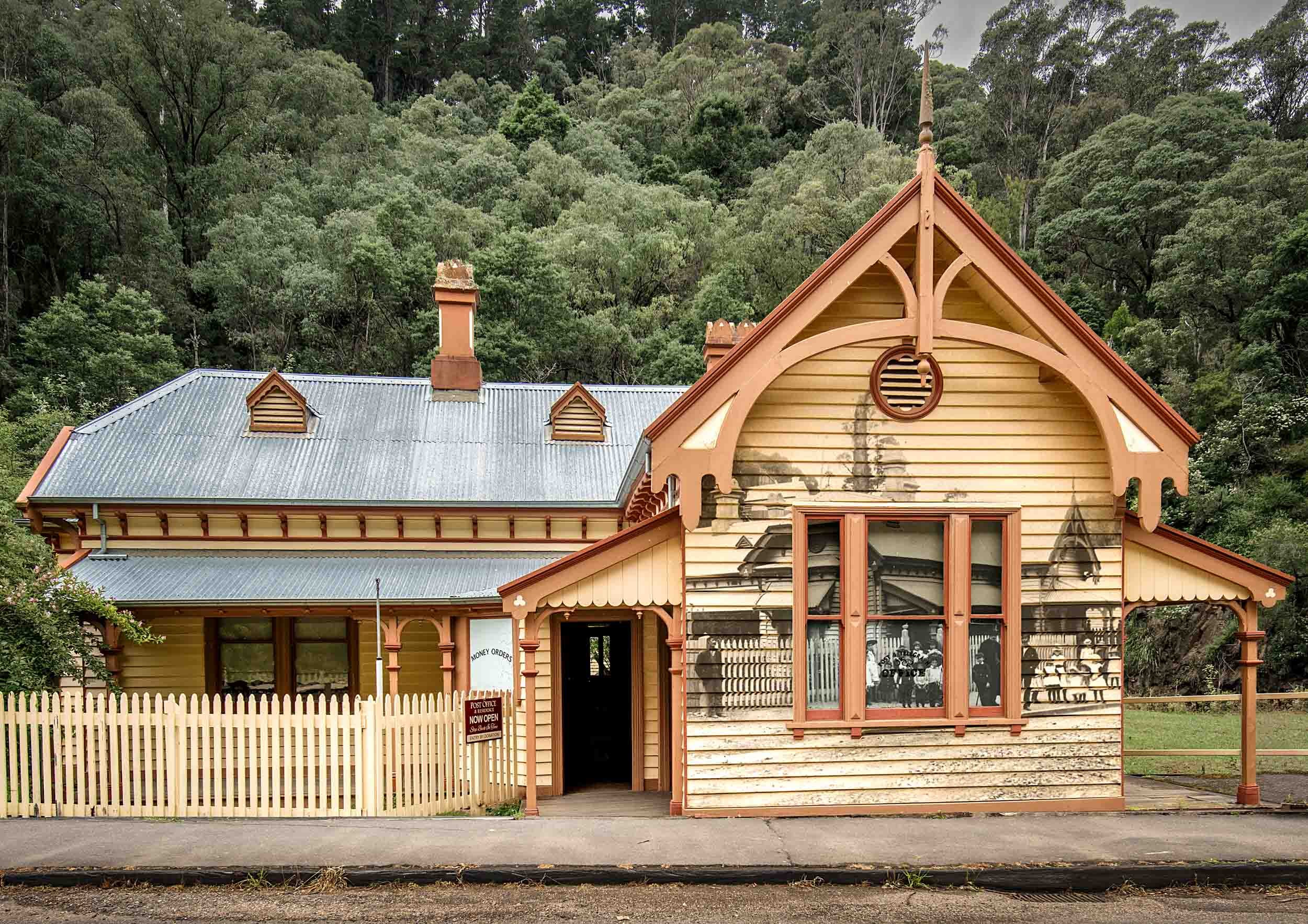
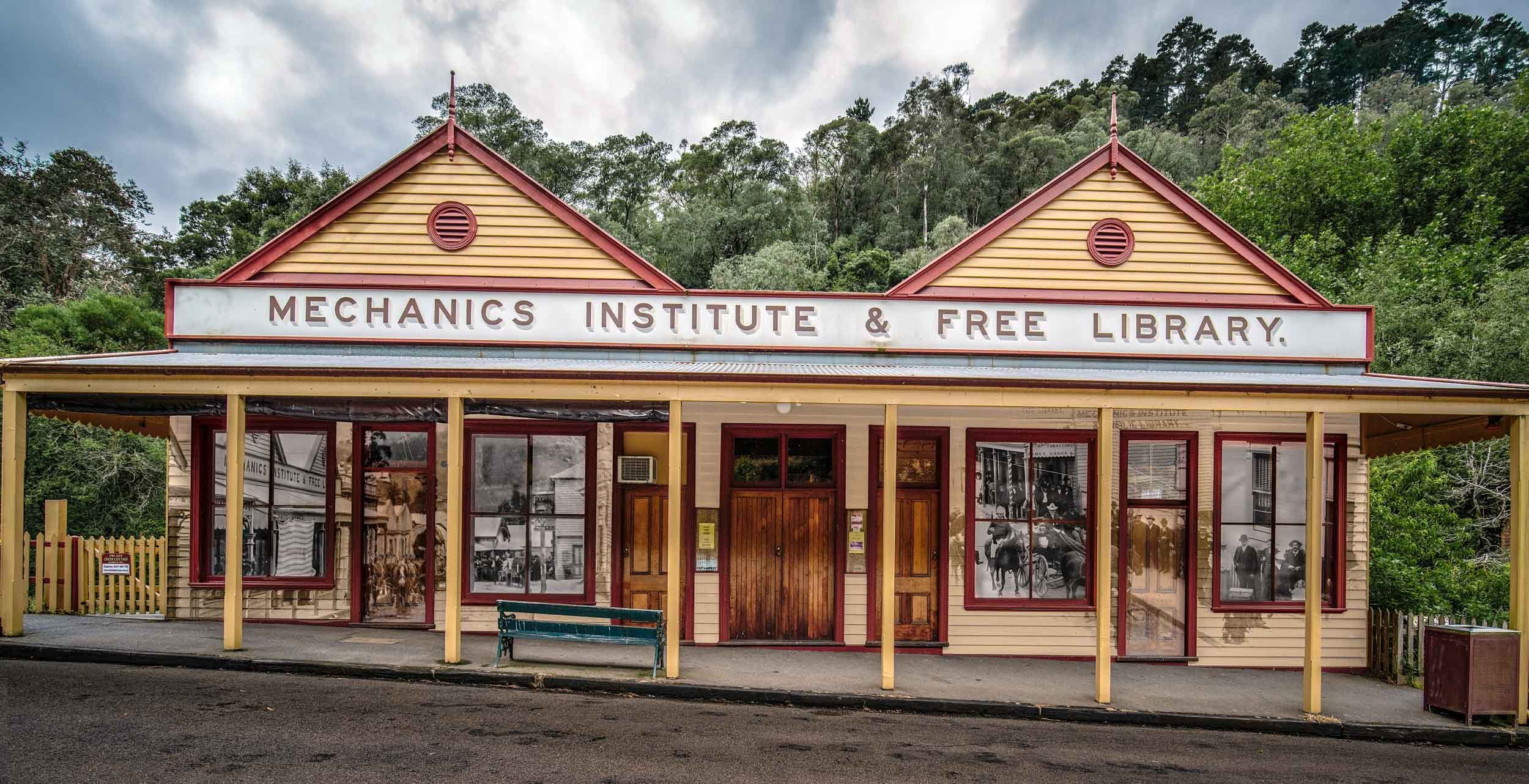
Talk of a railway connection from Moe to Walhalla started a decade after gold was discovered, but thirty years passed before work started. It was to be the last of four experimental narrow-gauge lines constructed by the Victorian Railways and when opened was one of the most picturesque train routes in Australia. Unfortunately, just four years after the rail service commenced the two main mines in Walhalla had ceased operation. The rail service to Walhalla subsequently closed in 1944 but continued to operate carrying passengers and freight – primarily timber – between Moe and Erica until 1954. A major effort to restore part of the track as a tourist railway began in 1993. Today, the 4 km of rail from Walhalla to a station at Thomson River Bridge (at the end of the bridge shown in this historical photo) carries many more passengers each year than it did as an operational passenger service.